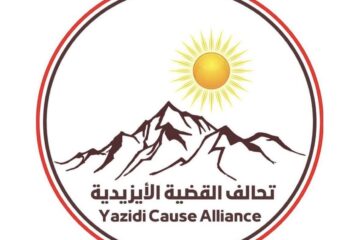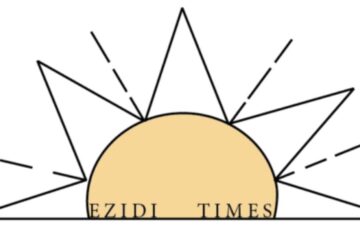Iraq’s Water Crisis Uncovers Traces of Ezidi Heritage Alongside Ancient Tombs
As Iraq faces its worst water shortage in nearly a century, the receding waters of the Mosul Dam reservoir are revealing not only long-buried Hellenistic tombs, but also fragments of Ezidi heritage once submerged beneath the Tigris.
Archaeologists in Duhok recently uncovered more than 40 tombs dating back 2,300 years, along with clay coffins linked to the Hellenistic-Seleucid period. While these discoveries shed light on northern Mesopotamia’s interactions with Greek rulers and settlers, the ongoing drought has also brought to the surface a more recent and intimate history for the Ezidi people.
In 2023, a long-submerged Ezidi village reappeared after lying underwater for nearly four decades. The following year, an Ezidi tomb from 1961 emerged along the banks of the Tigris. And in early 2025, the ruins of a school in Hanke — used by Ezidi children before the flooding caused by the Mosul Dam — resurfaced as well. Each appearance is a reminder of a living history displaced not only by modern infrastructure but also by repeated cycles of upheaval.
For Ezidis, these sites are more than remnants of stone or brick. They are markers of memory tied to the religion of Sharfadin and to generations whose villages, cemeteries, and places of learning were erased when the Mosul Dam was completed in 1986. More than 80 villages and countless archaeological sites were drowned under its waters.
The resurfacing of Ezidi sites comes at a time when the people continue to struggle with displacement after the 2014 genocide carried out by ISIS, which targeted Ezidis for their ethnicity and faith. The return of these submerged villages and tombs — though temporary — is a powerful symbol of endurance: a reminder that Ezidi presence in northern Mesopotamia is both ancient and unbroken.
Drought has a significant impact on agriculture and electricity. For archaeologists, it also allows them to excavate.” Yet for Ezidis, drought reveals something different: fragments of homes, graves, and schools once taken by the river, resurfacing briefly as witnesses to their people’s history.
While the newly unearthed Hellenistic tombs expand the scholarly map of Iraq’s ancient past, the reemergence of Ezidi heritage sites underscores another truth: Iraq’s water crisis is not only about scarcity, but also about memory — what was lost, what survives, and what refuses to disappear.



Leave a Reply